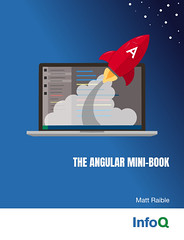AppFuse Refactorings Part I: Changing directory structure
I changed the directory structure of AppFuse's "src" and "test" directories this weekend. Rather than:
src - common - ejb - web
I changed it to:
src - dao - service - web
The change wasn't too difficult, but the results of doing it make me a bit sick to my stomach. I always new that the Managers in AppFuse were dependent on Struts, that's why I originally put them in the src/web/**/webapp/service folder. Now that I've moved them into the service folder, they don't inherit all the luxuries like struts.jar being in the classpath. Even worse, to compile the Managers, I have to compile any ActionForms, both from the build/web/gen directory, as well as from src/web/**/Form. This is because the Managers use BeanUtils.copyProperties() to transfer values from POJOs -> ActionForms and visa-versa.
Ech - this exercise has really shown me how tied together the different directories and layers are. I think I
liked it better the other way - or maybe I just liked not knowing how tightly integrated everything was. ;-) The most frustrating thing turned out to be that Ant's <javac> task wanted to re-compile the generated ActionForm's each time I I ran "ant compile-service". Adding an <uptodate> property fixed this problem, but it seems like it should be easier than that.
I ended up putting the org.appfuse.model package in the "dao" directory. It just made things easier - since the model.* classes are used in my DAOs
and the "test-dao" needs the XDoclet-generating Hibernate mapping files. I didn't want to have to depend on classes in the src/service directory to compile src/dao. It's bad enough I have to do that with the service-web stuff.
All in all, I'm happy with the refactorings, but implementing workarounds for the service-web relationship was no
fun. I probably did this when I originally created AppFuse, but since I haven't heavily manipulated build.xml in so long - I've forgotten the trouble I went through.
Oh yeah, I also integrated Spring for binding the layers and configuring Hibernate. And Charles' persistent cookie strategy? That's done too. I'll write up details on both of these refactorings in the next couple of days.


 , which I borrowed heavily from when creating AppFuse. Erik used common because this represented classes that would be included in both the web tier and the EJB tier. But since I (currently) don't plan on every adding EJBs to AppFuse, does it make sense? Even if I did, I'd probably only use SessionBeans, and those could easily fit into the service layer. The nice thing about moving the business layer (currently in web/**/services) to it's own directory is that it will get it's own JAR (with hardly any modifications to build.xml) and can be used outside of the webapp.
, which I borrowed heavily from when creating AppFuse. Erik used common because this represented classes that would be included in both the web tier and the EJB tier. But since I (currently) don't plan on every adding EJBs to AppFuse, does it make sense? Even if I did, I'd probably only use SessionBeans, and those could easily fit into the service layer. The nice thing about moving the business layer (currently in web/**/services) to it's own directory is that it will get it's own JAR (with hardly any modifications to build.xml) and can be used outside of the webapp.